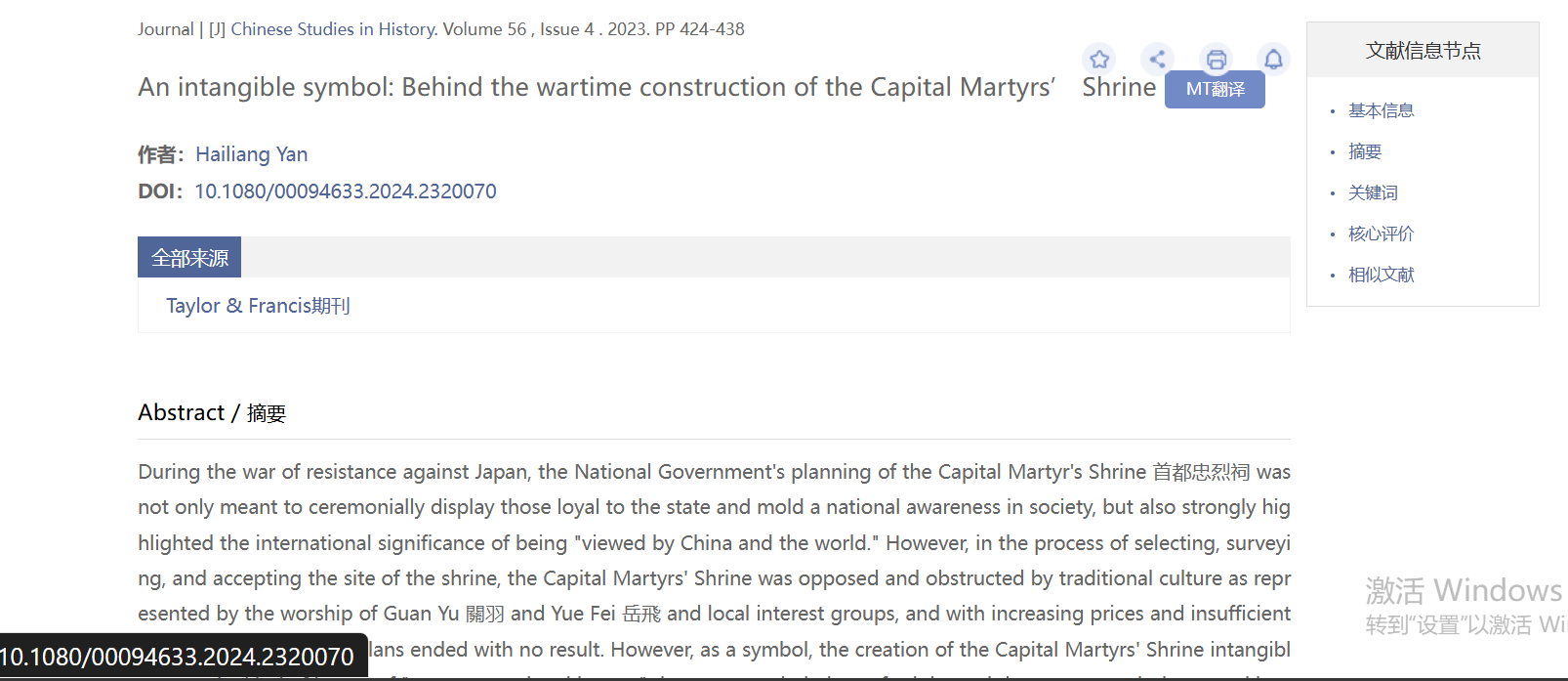鄢海亮:An Intangible Symbol: Behind the Wartime Construction of the Capital Martyrs' Shrine
 作者:鄢海亮
作者:鄢海亮
期刊:Chinese Studies in History
摘要:During the war of resistance against Japan, the National Government's planning of the Capital Martyr's Shrine 首都忠烈祠 was not only meant to ceremonially display those loyal to the state and mold a national awareness in society, but also strongly highlighted the international significance of being "viewed by China and the world." However, in the process of selecting, surveying, and accepting the site of the shrine, the Capital Martyrs' Shrine was opposed and obstructed by traditional culture as represented by the worship of Guan Yu 關羽 and Yue Fei 岳飛 and local interest groups, and with increasing prices and insufficient funds, the construction plans ended with no result. However, as a symbol, the creation of the Capital Martyrs' Shrine intangibly created a kind of image of "common national heroes" that transcended place of origin, and the martyr symbols created by the National Government were spread across classes and in multiple directions, strengthening the memory of the war of resistance.
